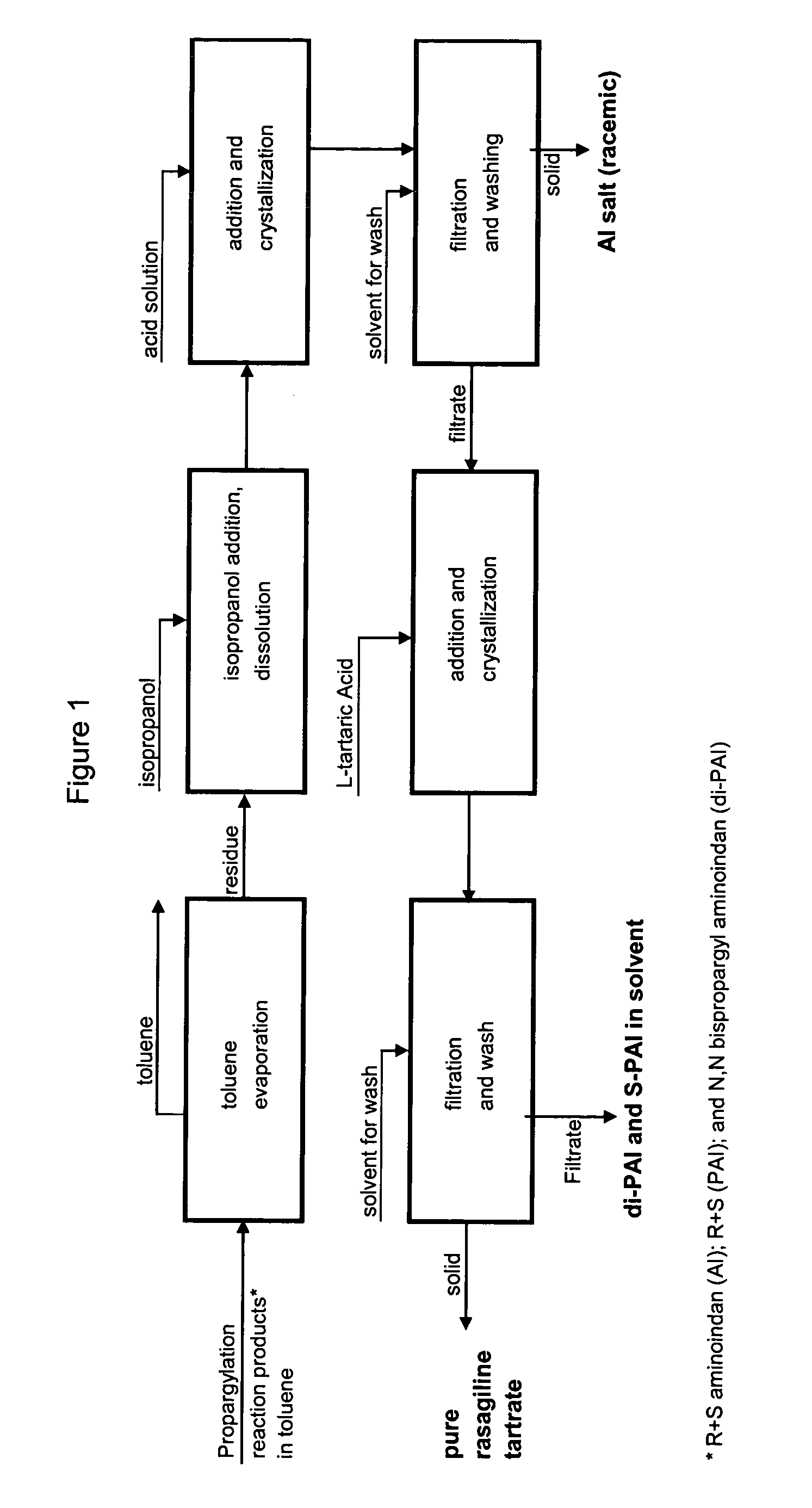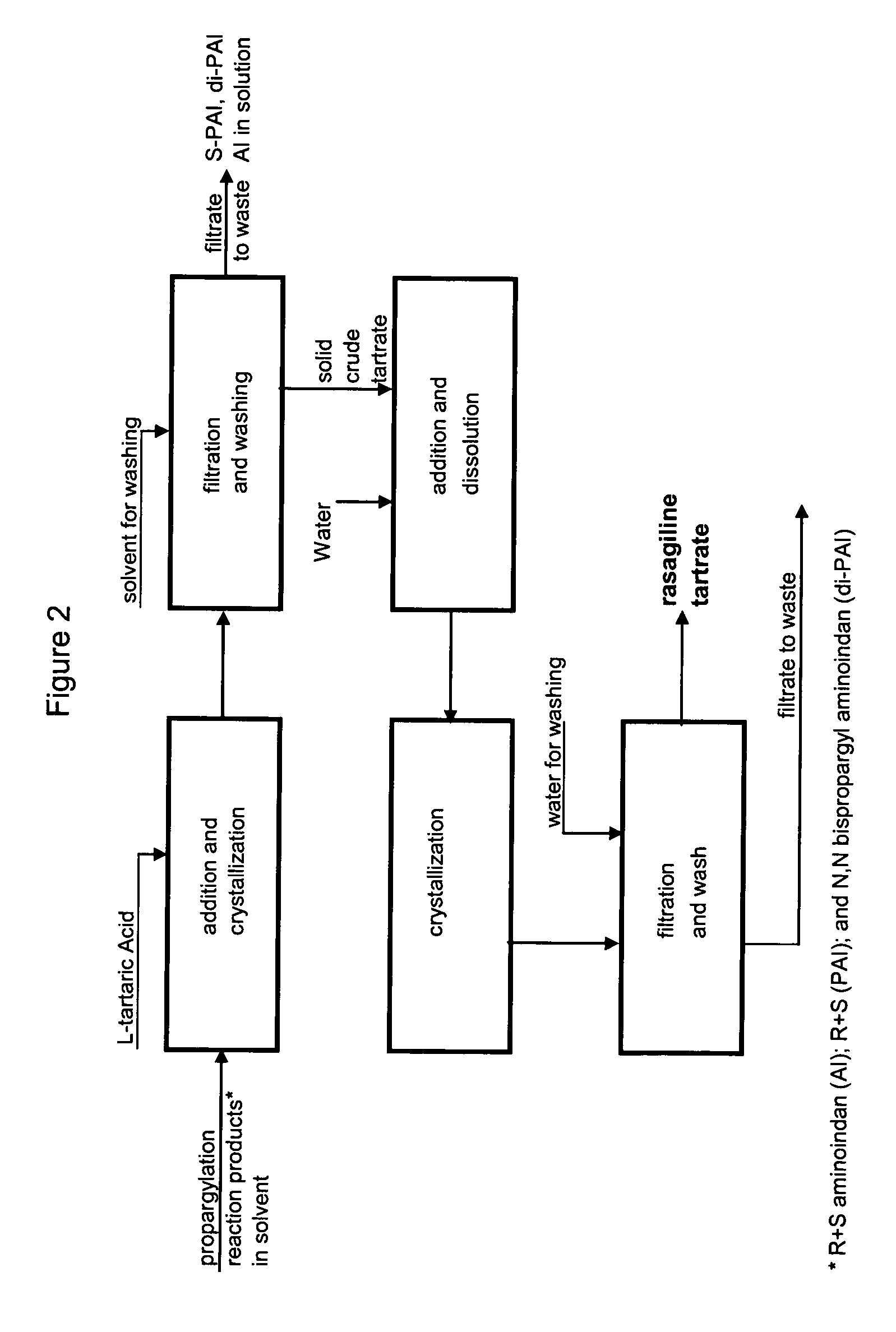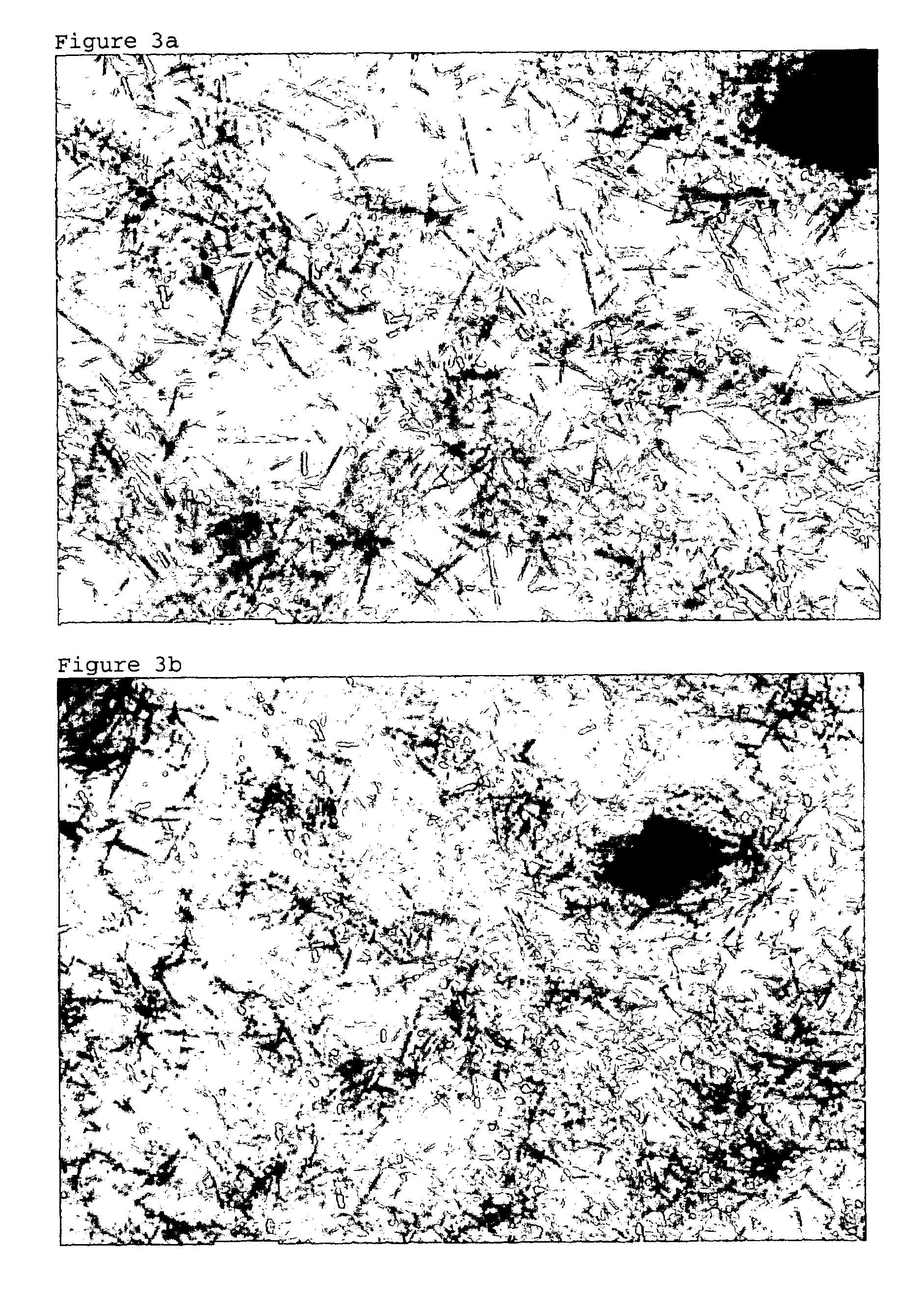Methods for isolating propargylated aminoindans
a technology of propargylated aminoindans and aminoindans, which is applied in the field of secondary propargylated aminoindan derivative isolation methods, can solve the problems of difficult chromatography scaling up, virtually impossible distillation, and high temperature, and is not industrially feasibl
- Summary
- Abstract
- Description
- Claims
- Application Information
AI Technical Summary
Benefits of technology
Problems solved by technology
Method used
Image
Examples
— examples 1-2
Extraction Methods—Examples 1-2
Example 1
Rasagiline Tartrate Isolation Using Extraction Method
[0172]1-aminoindan (45 g), toluene (135 ml), water (85 ml) and NaOH (60 g of 25% solution) were introduced into a reactor, stirred, and PBS (67.5 g) was added at ambient temperature. The reaction mass was heated to 45° C. and held at this temperature for 4 hours.
[0173]The stirrer was stopped and the reaction mixture was allowed to settle. After phase separation, the lower aqueous phase was discarded. The upper organic phase was mixed with 300 ml of water and was stirred. The resulting mixture was acidified with 66% sulfuric acid to a pH of 2.2 and stirring was stopped. The mixture was settled for ½ hour and the lower phase (acidic aqueous layer) was separated. The upper organic phase was discarded.
[0174]The aqueous phase was mixed with 250 ml of toluene while stirring and was basified to a pH of 6.3 with a 25% solution of NaOH. After the pH was adjusted to 6.3, the stirrer was stopped and th...
example 2
Ladostigil Tartrate Isolation Using Extraction Method
[0180]26.3 g of 100% (R)-CAI (in the form of 30.1 g technical grade syrup-like compound) were introduced into a reactor with water (75 ml), toluene (100 ml) and NaOH (34.8 g of 25% solution). 21.4 g of PBS were introduced and stirring was started. The reaction mass was stirred at 45-46° C. for 5 hours. The stirrer was stopped, and the mixture was allowed to settle.
[0181]The lower aqueous phase was discarded and the upper organic phase was mixed with 250 ml of water and was stirred. The mixture was acidified with 66% Sulfuric Acid to a pH of 2.0. After the acidification, the stirrer was stopped, and the mixture was allowed to settle. After phase separation, the upper organic layer was discarded and the lower aqueous phase was reintroduced into the reactor.
[0182]The acidic aqueous phase was mixed with 200 ml toluene, stirred, and basified with 25% NaOH to a pH of 5.2. The mixture was stirred at 45° C., the stirrer was stopped, and t...
example 3
Rasagiline Tartrate Isolation by Direct Precipitation of Rasagiline Tartrate
[0191]1-aminoindan (45 g), toluene (135 ml), water (85 ml) and NaOH (60 g of 25% solution) were introduced into a reactor, stirred, and PBS (67.5 g) was added at ambient temperature. The reaction mass was heated to 45° C. and held at this temperature for 4 hours.
[0192]The stirrer was stopped and the reaction mixture was allowed to settle. After phase separation, the lower aqueous phase was discarded. The upper organic phase was washed with 70 ml water and was evaporated under vacuum in a rotating evaporator. The residue which resulted was dissolved in 70 ml isopropanol and the solvent was again evaporated under the same conditions.
[0193]The resulting brown oil (55.4 g) was dissolved in 205 ml isopropanol while being stirred in a reactor. A solution of 12.6 g L-tartaric acid in 19.7 ml water was prepared.
[0194]The reactor with isopropanolic solution was heated to reflux while stirring, and the solution of L-t...
PUM
| Property | Measurement | Unit |
|---|---|---|
| aspect ratio | aaaaa | aaaaa |
| aspect ratio | aaaaa | aaaaa |
| pressure | aaaaa | aaaaa |
Abstract
Description
Claims
Application Information
 Login to View More
Login to View More - R&D
- Intellectual Property
- Life Sciences
- Materials
- Tech Scout
- Unparalleled Data Quality
- Higher Quality Content
- 60% Fewer Hallucinations
Browse by: Latest US Patents, China's latest patents, Technical Efficacy Thesaurus, Application Domain, Technology Topic, Popular Technical Reports.
© 2025 PatSnap. All rights reserved.Legal|Privacy policy|Modern Slavery Act Transparency Statement|Sitemap|About US| Contact US: help@patsnap.com



